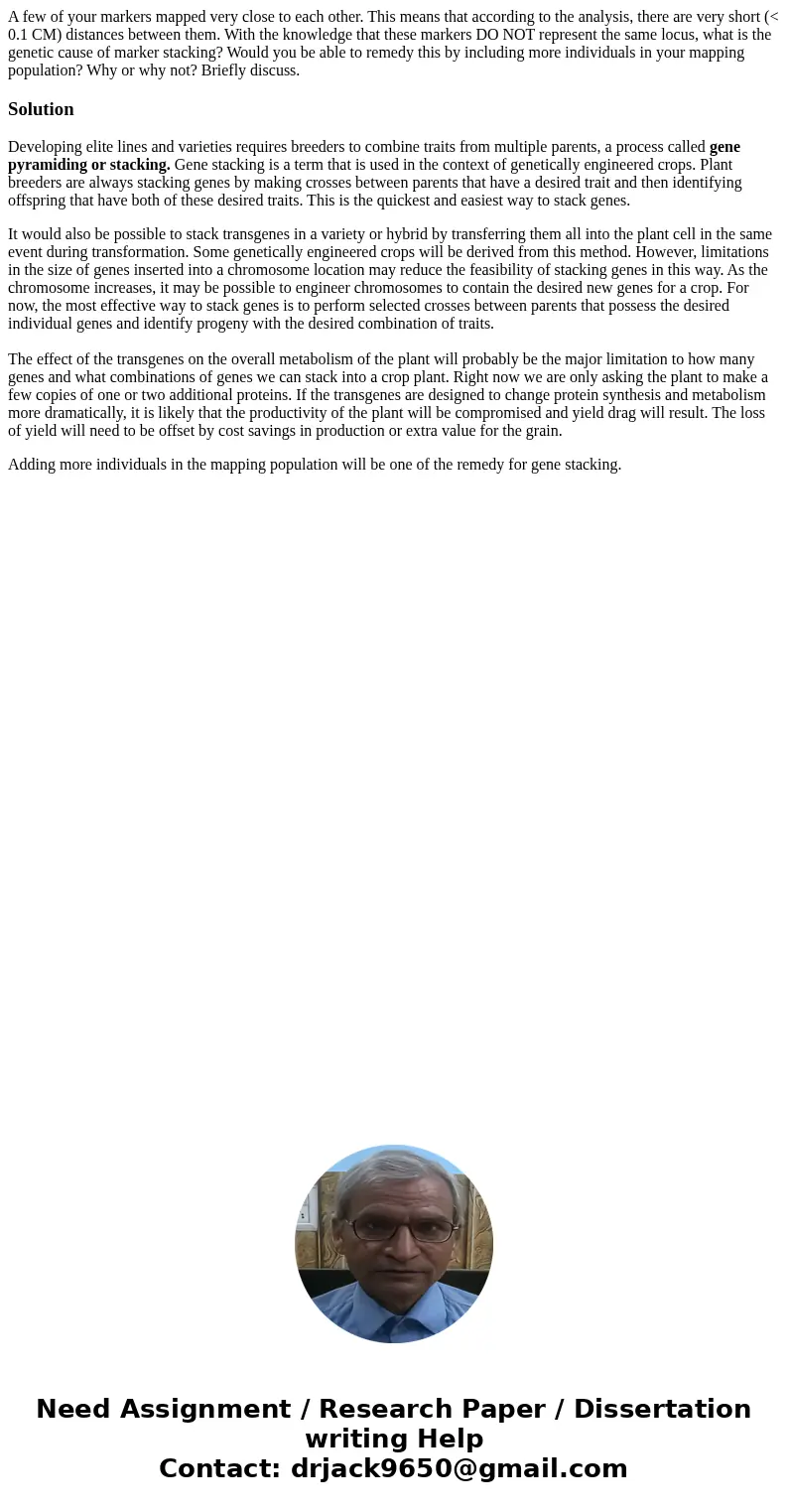A few of your markers mapped very close to each other This m
A few of your markers mapped very close to each other. This means that according to the analysis, there are very short (< 0.1 CM) distances between them. With the knowledge that these markers DO NOT represent the same locus, what is the genetic cause of marker stacking? Would you be able to remedy this by including more individuals in your mapping population? Why or why not? Briefly discuss.
Solution
Developing elite lines and varieties requires breeders to combine traits from multiple parents, a process called gene pyramiding or stacking. Gene stacking is a term that is used in the context of genetically engineered crops. Plant breeders are always stacking genes by making crosses between parents that have a desired trait and then identifying offspring that have both of these desired traits. This is the quickest and easiest way to stack genes.
It would also be possible to stack transgenes in a variety or hybrid by transferring them all into the plant cell in the same event during transformation. Some genetically engineered crops will be derived from this method. However, limitations in the size of genes inserted into a chromosome location may reduce the feasibility of stacking genes in this way. As the chromosome increases, it may be possible to engineer chromosomes to contain the desired new genes for a crop. For now, the most effective way to stack genes is to perform selected crosses between parents that possess the desired individual genes and identify progeny with the desired combination of traits.
The effect of the transgenes on the overall metabolism of the plant will probably be the major limitation to how many genes and what combinations of genes we can stack into a crop plant. Right now we are only asking the plant to make a few copies of one or two additional proteins. If the transgenes are designed to change protein synthesis and metabolism more dramatically, it is likely that the productivity of the plant will be compromised and yield drag will result. The loss of yield will need to be offset by cost savings in production or extra value for the grain.
Adding more individuals in the mapping population will be one of the remedy for gene stacking.

 Homework Sourse
Homework Sourse